#ScienceSaturday posts share exciting scientific developments and educational resources with the KAND community. Each week, Dr. Dominique Lessard and Dr. Dylan Verden of KIF1A.ORG summarize newly published KIF1A-related research. From February 5 – April 16, 2022, a team of talented students from Columbia University’s M.A. in Biotechnology program is taking over the Rare Roundup section!
KIF1A-Related Research
Intragenic suppressors of unc-104 [KIF1A] ( e1265 ) identify potential roles of the conserved stalk region
As our community knows, KAND isn’t a one-size-fits-all condition—there are many mutations in the KIF1A gene that contribute to different symptoms and outcomes. A crucial goal of basic research is to understand how the domains of KIF1A work together to create a functional motor protein.
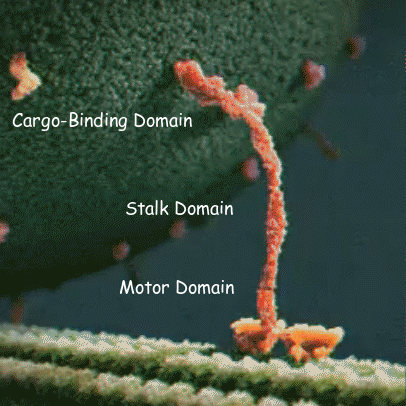
This week’s micro-paper investigates the stalk domain of KIF1A (called unc-104) in the C. elegans worm model. The stalk domain is a connective region between its cargo binding domain and its motor domain—as you can see in the GIF, the stalk doesn’t directly bind cargo or microtubules, so its roles are harder to determine. Researchers were studying a KIF1A mutation in the cargo-binding domain (e1265) that results in worms unable to move properly. They then utilized a suppressor screen—worms were subjected to random secondary mutations until their movement recovered, and these random mutations were identified. When the second mutation also occurs in KIF1A, it is called an intragenic (inside the gene) suppressor (it suppresses the movement issues in mutant worms). The initial cargo-binding mutation was suppressed by three secondary mutations; while one of these occurred in the cargo-binding domain, two occurred in the stalk domain.
Under normal circumstances, when KIF1A isn’t bound to cargo it folds up and stops moving—so mutations in the cargo-binding domain may prevent KIF1A from moving at all. The authors hypothesize that secondary mutations in the stalk region may prevent KIF1A from folding up so that it can continue moving with whatever cargo it is able to bind.
Studies like this give us clues about how different parts of KIF1A interact to perform its complex behavior, and may provide insight into how disease-associated mutations in the less characterized stalk region cause pathology.
Rare Roundup
Welcome to the #ScienceSaturday Takeover! This is this last week featuring our guest bloggers from Columbia University, who have been contributing weekly with insights and news from across the rare disease community. Today we highlight the insights they’ve gained from their time learning about KAND and other rare diseases. We thank Keyue, Hazel, Pragya, Rakshitha, and Aaron for all of the hard work they’ve put in over the last nine weeks.
Meet our guest bloggers here.
What is an insight you’ve gained from your time corresponding on rare disease research?
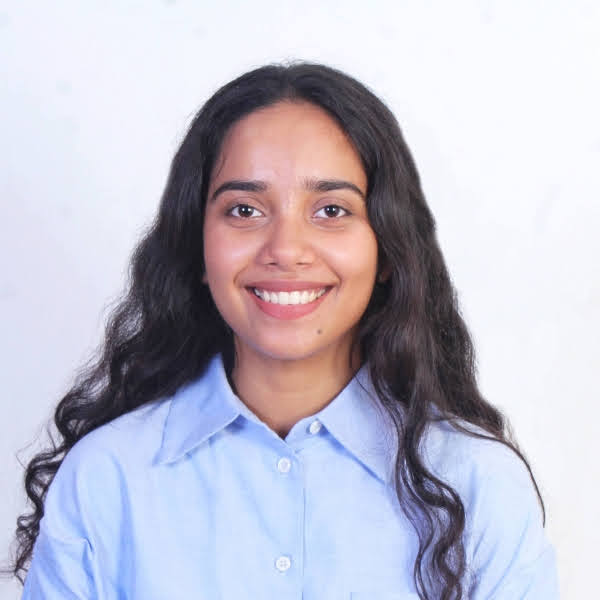
Witnessing firsthand Science Saturday and Warrior Wednesday taught me one thing I could never learn from scientific articles and labs that is ‘Compassion’!
1. I think through my time working at the KIF1A.ORG for KAND disease and also working for another rare disease called congenital Lymphatic Disorders I came to understand that rare diseases are not actually rare. There are more than 7000 rare diseases, which affect about 30 million people yearly. That’s 10% of the United States population!
2. Interviewing patient families and researching new diagnostics/therapies for rare diseases tells us that science is making a lot of progress. But we are not quite there yet.
3. I have come to realize that there are 2 types of Biotech – Biotech that focuses on the market side, and Biotech that focuses on extreme unmet need. But in hindsight, both are still businesses, and it is extremely difficult to convince Biotech to work for KIF1A disease. But with the combined passion of Luke Rosen, Dr. Wendy Chung, Kathryn, Dr. Dylan, and the entire community, the progress within Biotech has moved at an exponential rate.
4. Evie’s parents who helped expedite the research by donating their child’s body, this feat is something beyond noble. This single initiative has moved forward the rare disease’s research by years.
All in all, I would say that this is not an organization. It’s a community of fearless individuals, fueled by one single motive – organizational change in the rare disease therapeutic domain.
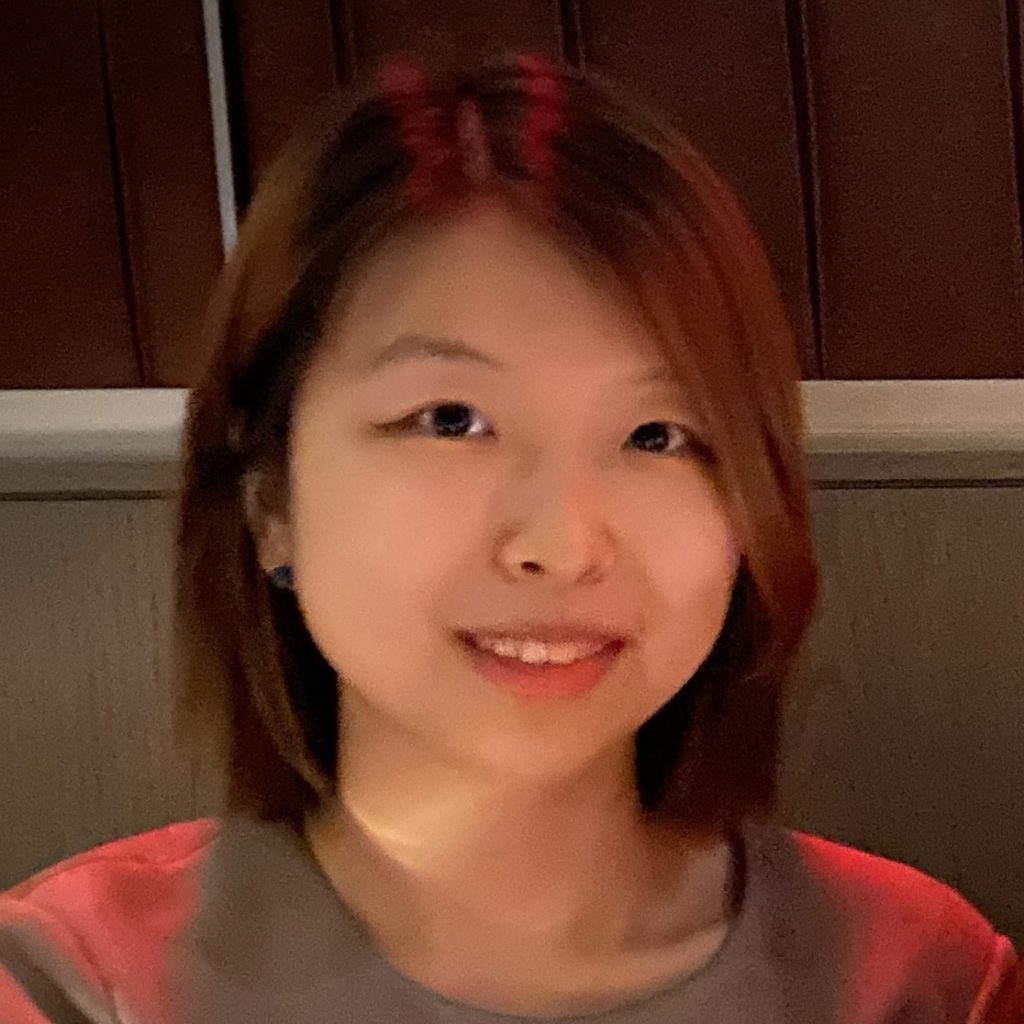
During my limited time of involvement in the KIF1A.ORG team, I gradually appreciated how small but tightly-knit this community is, what kind of misery the KAND families are suffering from, and how big of efforts they have been making to stand and fight against this terrible condition. Looking back at all the content I’ve created within the past 3 months, what I think could be a roadblock on our march to find a treatment for KAND, is the huge variability between patients. As shown in the figure below from a study by Boyle et al., each dot is a patient with a different KIF1A mutation, with the shape and color representing inheritance and severity of disease. It is obvious that at the molecular level, the pathogenic mutations vary greatly in location, types and severity.
However, genetic variability can only explain part of the picture of phenotypic variability we see in KAND patients. The same mutations can result in different symptoms in different patients and on the other hand, the same symptoms like seizures are commonly found in patients carrying different mutations (2 types of heterogeneity). The phenotype not only includes the symptoms and severity of the disease, but also the onset and progression. In fact, what surprises me a lot is that the onset of KAND ranges very widely from birth to 57 years old! We have a few patients who inherited the mutations from their parents, but mostly, the mutations are de novo and just pop up somewhere randomly on the gene. These mutations do not necessarily have to be bad, but the problem is that sometimes we cannot make a judgment about one we’ve never met before. This is called a VUS and hopefully standardized tools or models will be available in the future to predict or test the susceptibility of these mutations and give the affected individuals a definitive answer.
Despite such a huge heterogeneity, already being a minority ourselves trying to make a paradigm shift in this profit-driven world, we never leave anyone behind just because they are rare. From a practical side, an integrated strategy that can benefit all the patients is critical for us to face the recruitment challenges when it comes to drug development. Massive natural history study and mechanism research can help us pinpoint a common clinical effect across a heterogeneous patient population as valid endpoints for clinical trials. The incredible advances in genome sequencing and gene therapy brought hope for rare disease patients with extremely unmet medical needs like us. While we are at the edge of the seat waiting for a clinical transition of these exciting scientific innovations, we still need to hold a critical and cautious attitude towards these novelties. It doesn’t mean we need to wait until their perfection, but instead a reliable approval pathway to balance the risk and benefit in between. Taken together, individual variability complicates our problem but won’t stop our tracks. By moving toward our mission hand in hand, we can make a difference.
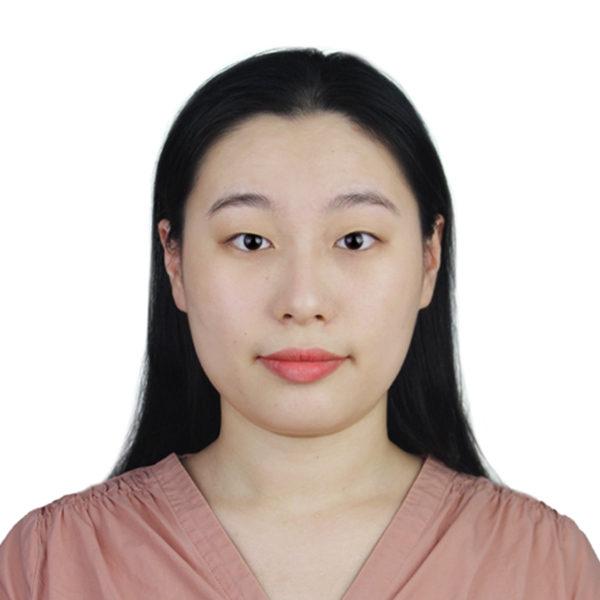
The coronavirus pandemic makes scientists and the public focus on the public health topics, and also urges scientists to use social media to share epidemiological knowledge and the latest findings of Covid-19 with the public. For example, when scientists released the gene sequence of SARS-CoV-2 on the website virological.org, Benhur Lee, a virologist at Icahn Medical College in Mount Sinai, immediately noticed the news and announced to follow up the relevant research. Moderna, a pharmaceutical company and the National Institutes of Health (NIH), have accelerated the development of mRNA vaccines based on the coding sequence of the virus spike protein, which usually takes several or more years to develop. Facts have also proved that the vaccine has successfully saved countless lives.
The change in scientific communication has aroused widespread controversy in the scientific community. Some scientists believe that social platforms are full of false information and online violence, which is not helpful to scientific research. A survey before the pandemic found that less than one in five researchers had Twitter accounts. Many scientists’ tweets are only read by part of peers. But other scientists, such as Natalie Dean and Muge Cevik, are willing to accept such a change and feel that they can learn the thinking direction of other scientists from social media or enable the public to obtain knowledge of public health. As the epidemic subsides, scientists are also considering ways to advance their research on social media.
This is exactly what KIF1A has been working on. If there could be more blogs using easy-to-understand words just like #ScienceSaturday instead of strict professional terms to introduce scientific knowledge and turn charts in the paper into more intuitive images, scientific research and rare disease would be better known by the public. This also attracts more investment in new drug research and development, and encourages the public to pay more attention to patients and families. I was impressed by the close collaboration between Dr. Chung and other scientists and KIF1A. Instead of waiting for miracles, children of KAND now can work with researchers to promote the progress of science, moving towards hope.
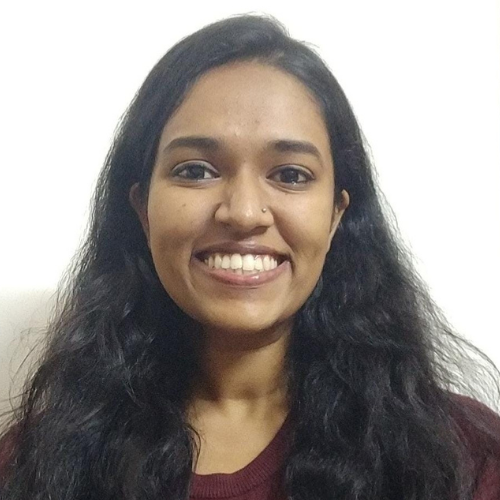
Being introduced to a scientific community like KIF1A.ORG has brought much to light. I can undoubtedly say that I have learned something new each week, whether it be the scientific aspect of KAND or the personal side of it. Though most scientists understand the effects of mutations and variants better than most, KIF1A.ORG has helped me realize the value of understanding it from a personal view, with each patient presenting different symptoms and levels of severity. The insight that the Science Saturday team has gained through the weeks is beyond compare and has changed what “awareness” means to us. There is so much value in the term when one faces a disease such as KAND. While we strive to increase awareness and the knowledge database every week, I think we also realized that the sense of belonging that KIF1A.ORG has built with its members is one that most organizations seek and is extremely hard to achieve. For this, we are proud to be part of the community. Overall, it is vital to address the severity of the disease, the socio-economic aspect, and its impact on the patients, their families, and loved ones. This applies not just to KAND, but all rare diseases. The way KIF1A.ORG has been an advocate for KAND is something that stood out to the team and is to be appreciated. The initiatives they take to encourage families – be it through Warrior Wednesday, Science Saturday, or something as simple as keeping the families interactive and in touch through their social media reel trends makes a significant impact and induces a strong sense of belonging. Finally, I would like to add that one thing has been certain over the years – and that is development. As a scientific community, we constantly discover new technologies and uncover scientific aspects that were not considered crucial before. Especially with KIF1A.ORG being as proactive as they are, we have much to look forward to!
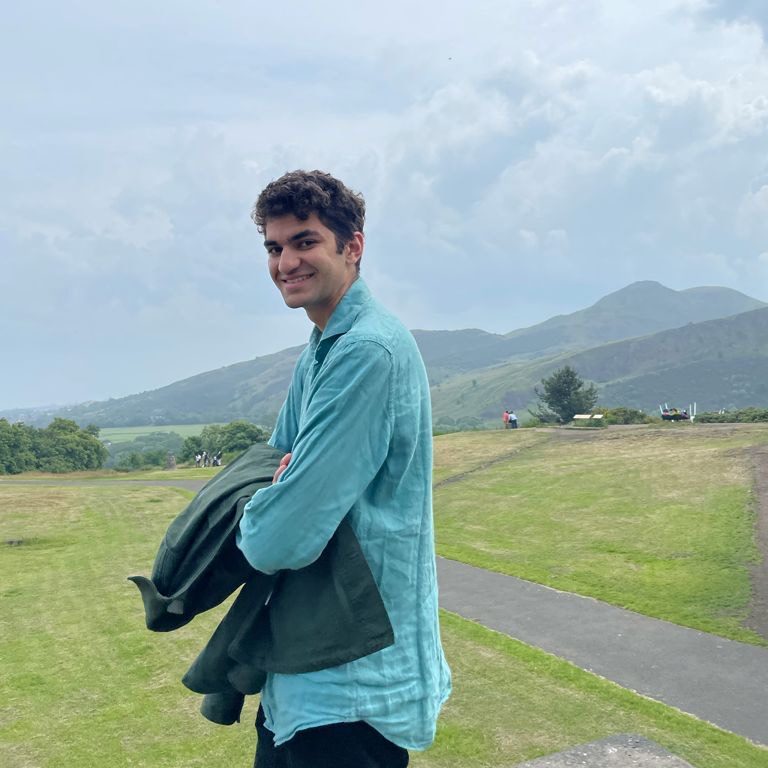
I think the most substantial thing that I have learned in the past weeks writing for #ScienceSaturday is the emotional side of rare diseases. In my undergrad and my current degree (both in Biotech) the focus has always been on the scientific side of diseases. Though the patient experience is discussed, it is usually not in depth. I feel that I have learned how far-reaching the consequences of a rare disease diagnosis can be. I was not aware of the extent to which a rare diagnosis can impact the life of the patient and their family. This became especially clear from reading about KAND and KIF1A.org right at the beginning of our project, from the talk given by Luke Rosen in our class, and from reading and writing about challenges faced by rare disease patients in Ukraine. While I had always been aware, in the back of my mind, how serious the diseases we learn about in class are, being a part of KIF1A.org made me consider the social impacts of diseases in a much more real and extensive way. It is not that I was completely unaware before, but the emotional, social and human aspects have moved more to the foreground when thinking about disease, alongside the clinical aspects.
This understanding of the emotional aspect of rare disease has also made me aware of the strength of the community feel and personal connections in rare disease. I was moved by the strong sense of community at KIF1A.org. Through Luke Rosen’s talk, Dr Chung’s talk, browsing through the website, and talking to Dylan and Kat it became very clear how strong the community-feel is at KIF1A.org. On top of this, I was greatly surprised by the strength of the rare disease community as a whole. Initially, it seemed to me that referring to very different diseases as part of the same category, just because they are rare, never seemed very helpful or fitting. However, I think understanding the struggle that rare disease patients face in terms of diagnosis, care, and the impact on patient families’ lives has helped me to understand why the term rare disease is helpful, why there is such a strong sense of community within rare diseases, and why this sense of community is so important.
All in all, I think this experience has made me much more aware of the human side of (rare) diseases. In turn, I’ve learnt how the strong sense of community is in rare disease; how strong the mutual understanding is that everyone is facing the same challenges, and that no-one is alone in this.

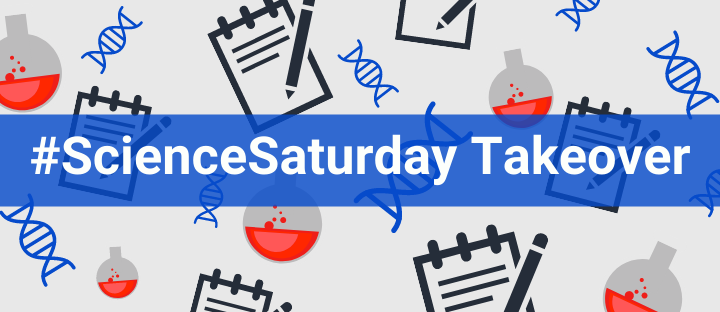
Your contribution to the KIF1A community has been truly valuable to us all. My hope for our children and families has been strengthened by knowing you go forth in your lives participating in making progress in the science of your professions with the faces our courageous loved ones to embolden and encourage you.
With Gratitude
Liz (Susannah’s Nana)